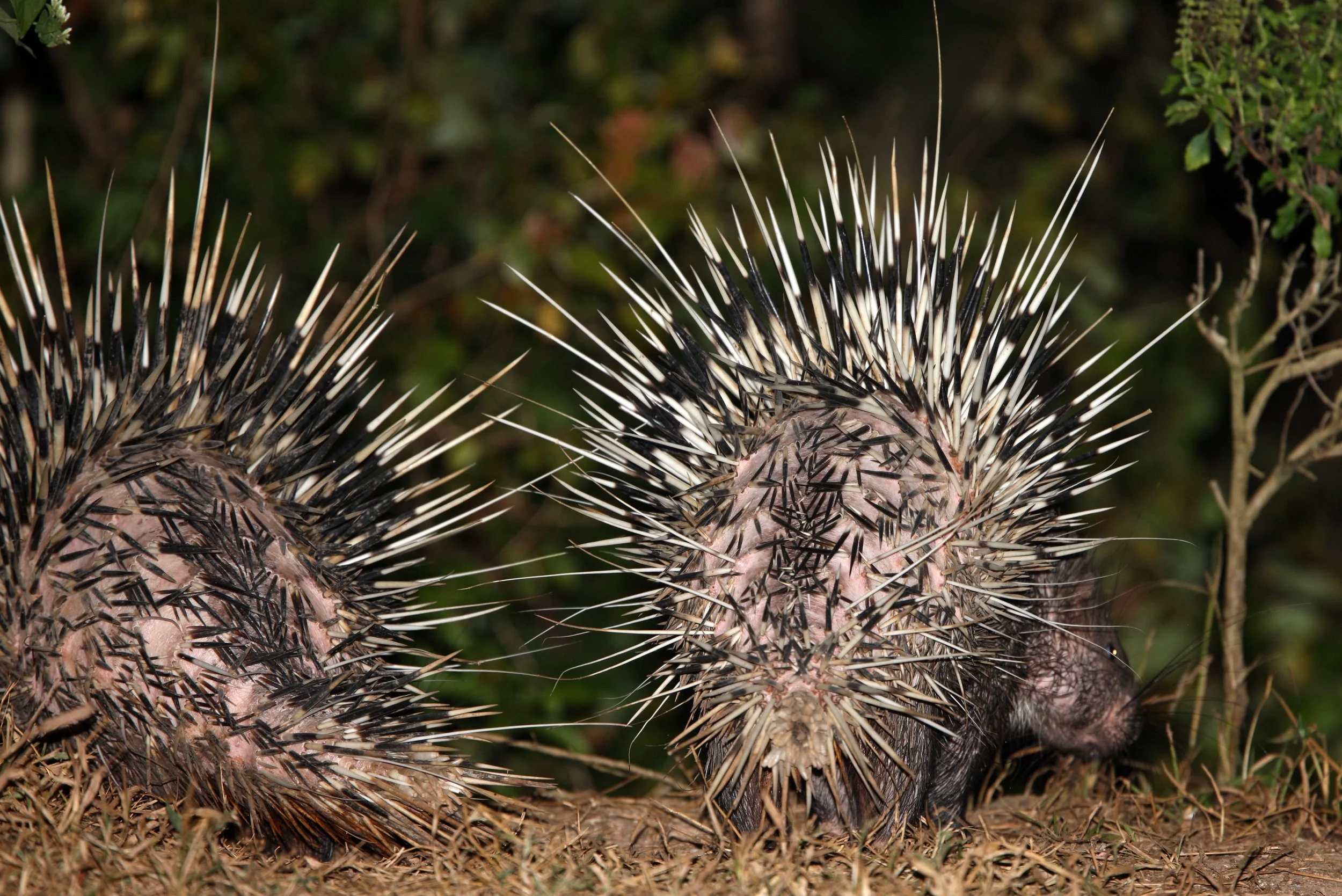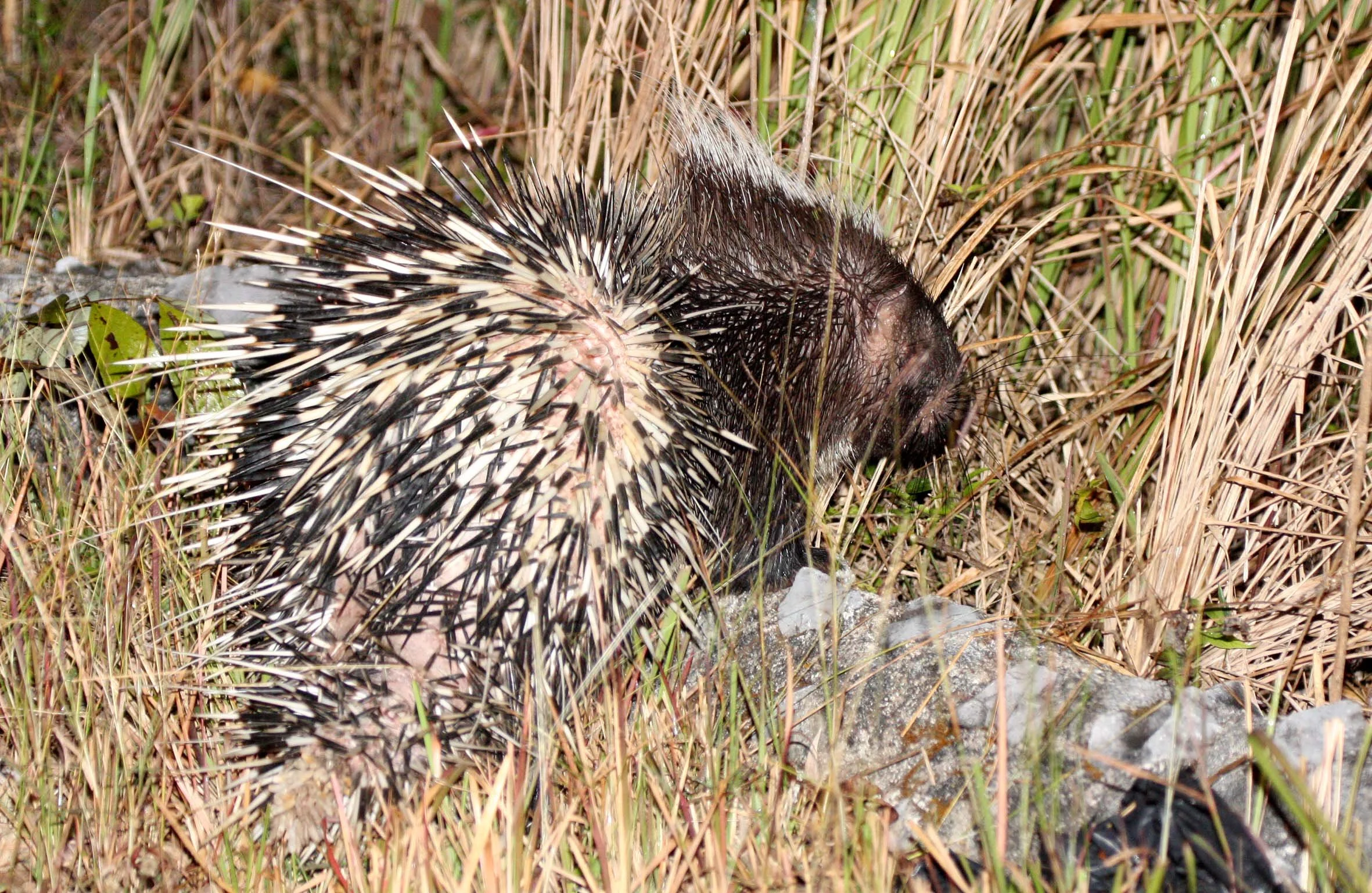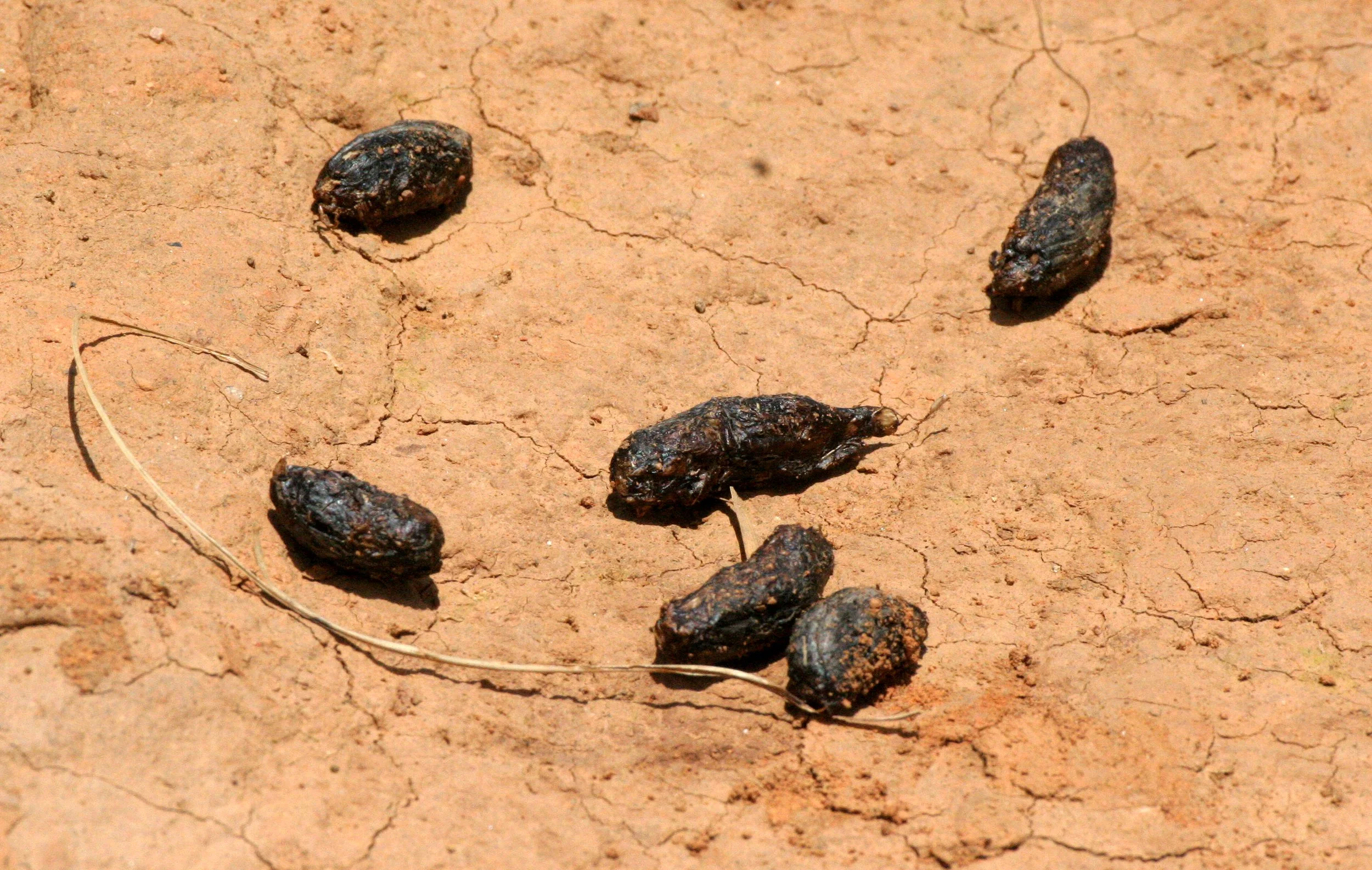
Indian Crested Porcupine (Hystrix indica)
Cape Porcupine (Hystrix africaeaustralis)
Malayan Porcupine or Himalayan Porcupine (Hystrix brachyura)
The Cape Porcupine (Hystrix africaeaustralis), Cape crested porcupine or South African porcupine, is a species of Old World porcupine native to central and southern Africa.
Cape porcupines are the second largest rodents in Africa and also the world's second largest porcupines. Cape porcupines are amongst the largest living rodents in the world; a few other rodents appear to be larger in body mass such as the capybara and the Eurasian and North American beavers. They are similar in appearance to, and only slightly smaller than, their close relatives, the crested porcupines, and can most easily be distinguished from them by the presence of a band of short white spines along the midline of the rump. Indian porcupines are almost the same size on average as well, being slightly heavier on average than crested porcupine but slightly lighter than Cape porcupines.
Cape porcupines measure 63 to 81 centimetres (25 to 32 inches) long from the head to the base of the tail, with the tail adding a further 11–20 centimetres (4.3–7.9 inches).[7] They weigh from 10 to 24 kilograms (22 to 53 pounds), with exceptionally large specimens weighing up to 30 kg (66 lb); males and females are not significantly different in size. The average weight of males from Zimbabwe was 16.9 kg (37 lb) and while the average for females there was 18.4 kg (41 lb) while in the Orange river valley of South Africa males averaged 12.3 kg (27 lb) and females averaged 13 kg (29 lb).
They are heavily-built animals, with stocky bodies, short limbs, and an inconspicuous tail. The body is covered in long spines up to 50 centimetres (20 in) in length, interspersed with thicker, sharply pointed, defence quills up to 30 centimetres (12 in) long, and with bristly, blackish or brownish fur. The spines on the tail are hollow, and used to make a rattling sound to scare away predators. An erectile crest of long, bristly hairs runs from the top of the head down to the shoulders. The spines and quills cover the back and flanks of the animal, starting about a third of the way down the body, and continuing onto the tail. The quills have multiple bands of black and white along their length, and grow from regularly spaced grooves along the animal's body; each groove holding five to eight quills. The remainder of the animal, including the undersides, is covered with dark hair.
The eyes and ears are relatively small, and the mobile whiskers are short. The feet have five clawed toes, although the first toes on the forefeet are vestigial. Females have two pairs of teats.
Cape porcupines are found across the whole of southern and central Africa, to southern Kenya, Uganda, and Congo at the northern edge of their range. They inhabit a wide range of habitats, from sea level to 2,000 metres (6,600 ft), although they are only marginally present in dense forests and the driest of deserts, and are not found in swampland. There are no currently recognised subspecies.
Hystrix africaeaustralis - Photographed in Etosha Namibia.

The Indian Crested Porcupine (Hystrix indica) is a hystricomorph rodent species native to southern Asia and the Middle East. It is listed as Least Concern on the IUCN Red List. It belongs to the Old World porcupine family, Hystricidae.
The Indian crested porcupine is a large rodent, weighing 11–18 kg (24–40 lb). Their body (from the nose to the base of the tail) measures between 70 and 90 cm (28 and 35 in) with the tail adding an additional 8–10 cm (3.1–3.9 in). The lifespan of wild Indian crested porcupines is unknown, but the oldest known captive individual was a female that lived to be 27.1 years old.
It is covered in multiple layers of modified hair called quills, with longer, thinner quills covering a layer of shorter, thicker ones. The quills are brown or black with alternating white and black bands. They are made of keratin and are relatively flexible. Each quill is connected to a muscle at its base, allowing the porcupine to raise its quills when it feels threatened. The longest quills are located on the neck and shoulder, where the quills form a "skirt" around the animal. These quills can grow up to 51 cm (20 in) long, with most measuring between 15 and 30 cm (5.9 and 11.8 in). Smaller (20 cm) and more rigid quills are packed densely on the back and rump. These smaller quills are used to stab at potential threats. The base of the tail contains shorter quills that appear white in color, with longer, hollow quills that the porcupine can rattle to produce a warning sound when threatened. Contrary to popular belief, Indian crested porcupines (like all porcupines) cannot shoot their quills.
The Indian crested porcupine has a stocky build with a low surface area to volume ratio, which aids in heat conservation. It has broad feet with long claws used for burrowing.[2] Like all porcupines, the Indian crested porcupine has a good sense of smell and sharp, chisel-like incisors.
Indian crested porcupines are found throughout southwest and central Asia, including Afghanistan, Armenia, Azerbaijan, China, Georgia, India, Iran, Iraq, Israel, Jordan, Kazakhstan, Kyrgyzstan, Lebanon, Nepal, Pakistan, Saudi Arabia, Sri Lanka, Turkey, Turkmenistan, and Yemen. Due to their flexible environmental tolerances, Indian crested porcupines occupy a broad range of habitats. They prefer rocky hillsides, but are also common in tropical and temperate shrublands, grasslands, forests, plantations, and gardens. Their range seems to be limited by seasonal densities of forage and the availability of suitable substrates for digging burrows. More specifically, the northern range of the Indian crested porcupine is limited by minimum summer night duration: they do not occur above latitudes where minimum night duration is less than 7 hours, presumably because of the amount of foraging time required to meet their dietary needs.
This pair was photographed in India in 1997

The Malayan Porcupine or Himalayan Porcupine (Hystrix brachyura) is a species of rodent in the family Hystricidae. Three subspecies are extant in South and Southeast Asia.
The Malayan porcupine ranges from Nepal through north-east India (Arunachal Pradesh, Sikkim, West Bengal, Manipur, Mizoram, Meghalaya and Nagaland), to Bangladesh, central and southern China (Xizang, Hainan, Yunnan, Sichuan, Chongqing, Guizhou, Hunnan, Guangxi, Guangdong, Hong Kong, Fujian, Jianxi, Zhejiang, Shanghai, Jiangsu, Anhui, Henan, Hubei, Shaanxi, Gansu), throughout Myanmar, Thailand, Laos, Cambodia and Vietnam, through Peninsular Malaysia, to Singapore, Sumatra (Indonesia) and throughout Borneo (Indonesia, Malaysia, Sarawak[5] and Brunei). It is also present on the island of Penang, Malaysia. It can be found from sea level to at least 1,300 m asl.
This species and their close relatives are believed, based on their current distribution, to have originated in southern Asia. They likely have a common ancestor from the Late Pleistocene when Sumatra, Borneo, and Palawan were part of Sundaland.
Malayan porcupines are terrestrial and usually to be found in small groups in various types of forest habitats, as well as open areas near forests: they may also stray into nearby agricultural areas. They often inhabit dens they have found near rocky areas or in the holes of trees or root systems. They may also dig out and live in burrows, from which a network of trails penetrate into surrounding habitat. They can be found in all forest types up to 1500 m altitude.
Female porcupines have a gestation period of 110 days and a litter size of two or three. The species may give birth to two litters annually.
It is a large and stout-bodied rodent covered with quills which are sharp, rigid structures. The quills are modified hair. Those on their upper body parts are rough with black with white or yellow stripes. The young's soft quills become hard as they enter adulthood. They have short, stocky legs covered in brown hairs which have four claws on the front and five on the hind legs. Both front and hind legs have smooth soles. The head and body measurement are around 56-74 cm and the tail is about 6–11 cm. They weigh around 10 kg-18 kg.
Malayan Porcupine (Hystrix brachyura) Various locations in Thailand

Hystrix brachyura - Malayan Porcupine - Khaeng Krachan NP Thailand



















Hystrix brachyura - Malayan Porcupine - Khao Yai NP Thailand




























Hystrix brachyura - Malayan Porcupine - Khaeng Krachan NP Thailand












































Hystrix brachyura - Malayan Porcupine - Khao Yai NP Thailand July 2024
























































